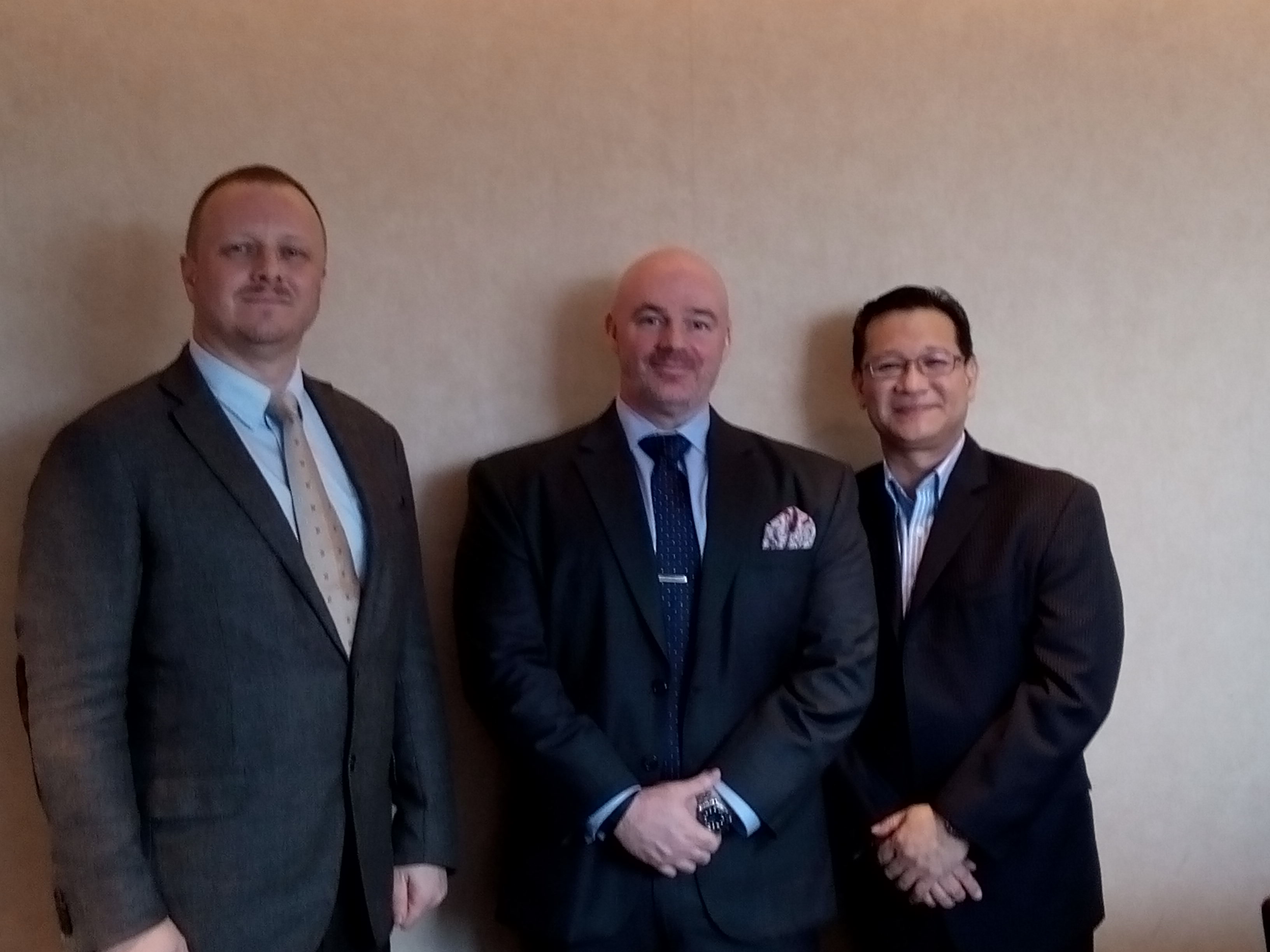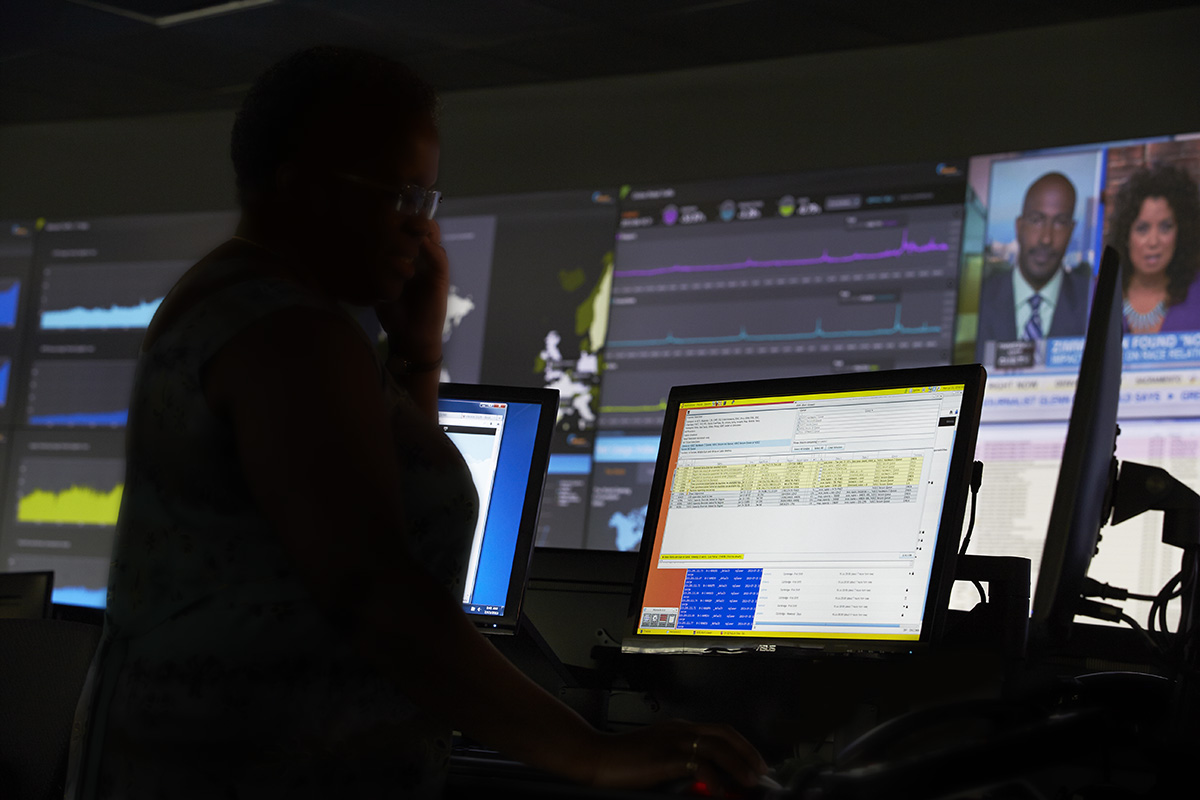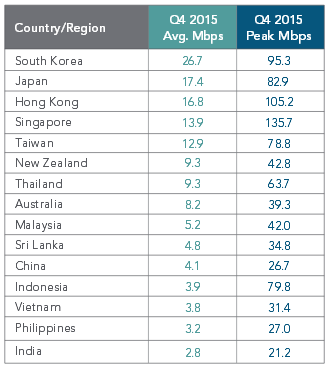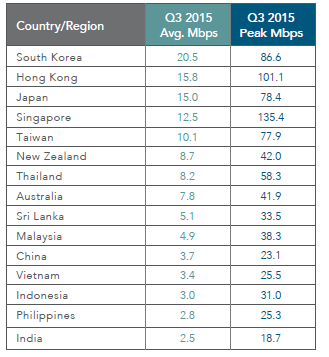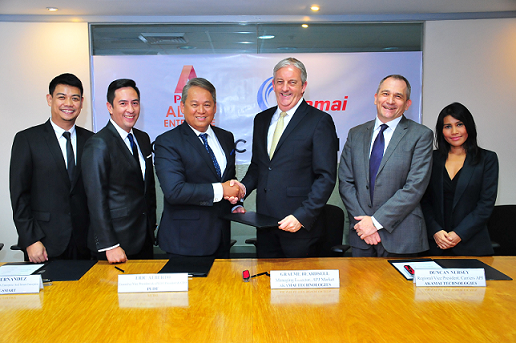Online users are becoming more dependent on cloud-based storage and are uploading bigger images and videos in social networks, thus making web sites heavier and internet speed slower—posing challenges on the performance of service providers and affecting the user experience.
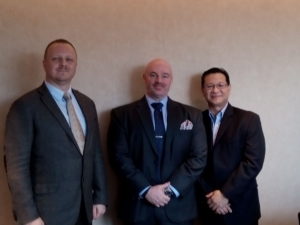
AKAMAI EXECUTIVES. From left: Matthew Sturgess, Business Development Manager, Media, ASEAN; John Ellis, Chief Strategist, Cyber Security, APAC & Japan; Gerald Penaflor, Country Manager in the Philippines
This increasing consumer demand for video across mobile devices is driving the need for better and faster system of content delivery, according to Matthew Sturgess, Business Development Manager, Media, ASEAN, at Akamai Technologies, Inc.
Video traffic is increasing at a rapid rate, says Sturgess, noting that in 2016, the video traffic reached 41Tbps from 33.6Tbps in 2015.
Sturgess also cited that the media coverage of the recent U.S. Presidential Election was the largest single news event Akamai has ever helped its customers deliver, according to the company.
Live video streaming traffic specific to the election peaked at 7.5 Tbps on the Akamai Platform shortly before midnight Eastern Time on Tuesday, November 8th, eclipsing previous news events, and placing it among the highest video traffic peaks for any individual event delivered by Akamai.
“The only way we can fix the problem [with performance issues] is to deal with it intelligently by looking at the device, looking at network connectivity of that device, looking at the content file, and determine what the right image is. We will also look at the packaging to have one common standard and use intelligent software design,” said Sturgess.
Sturgess added, “We will work with telecom providers, with PLDT and others, understanding the devices, understanding the facts so we know where everything is and we help customers to deliver their content intelligently.”
Security is another challenge to the Internet, according to John Ellis, Chief Strategist, Cyber Security, APAC & Japan at Akamai Technologies, Inc., who claims Akamai has the ability to secure its infrastructure.
Ellis, in his presentation, noted that the industry faced what is considered as the latest ‘harbinger’ attacks powered by a malware known as Mirai which uses botnet created on internet-connected devices to clobber targets.
Increase in DDoS attacks
The Akamai Third Quarter 2016 Report on the State of Internet/Security revealed a 138% increase in total Distributed Denial of Service (DDoS) attacks greater than 100Gbps with two record DDoS attacks caused by Mirai botnet. To date, these two attacks were the biggest observed by Akamai, recorded at 623Gbps and 555Gbps.
DDoD attacks in the third quarter this year rose by 71% compared with the same period last year. Akamai, on the other hand, has mitigated a total of 4,556 DDoS attacks, registering an eight percent drop over the previous quarter this year.
The average annual cost to deal with DDoS is approximately $1.5-million or Php73-million, Ellis shared.
Despite an 18% drop in the total Web application attacks in the third quarter of 2016 compared with the same quarter last year, Ellis noted that Web application attacks are the No. 1 source of data breaches while SQL injection is the most common attack vector used in breaching a Web site. Brazil, the top country of origin for all Web application attacks in Q2 2016, also experienced a 79% decline in attacks in Q3 2016.
Three main pillars of Akamai
Performance, security, and media delivery constitute the three main pillars of the Akamai platform.
“The expectation is that this platform should have these deliverables – Internet security, Web performance, and media delivery. If you don’t have content delivery networking platform globally, you will crawl, and you cannot use the Internet if it is slow,” said Gerard Penaflor, Philippines Country Manager at Akamai Technologies, Inc.
Akamai boasts a platform that consists of server investments which it deployed and expanded over the last 17 years to reach 216,000 servers globally. These are scattered to every single major service provider in 120 countries’ 1,500 networks around the world. In the Philippines alone, Akamai has more than 800 servers that were deployed over the past seven months.
Akamai also provides a portal for its customers to see the amount of traffic that they are engaging, the amount of traffic in downloading information, and the amount of traffic that comes in and out of the organization. And since the platform that we introduced is within the Internet, Penaflor said, “we can intercept at least 30% of the global traffic.” This provides enormous ability and detect performance to make sure that you are secured and not scared if you are running a business, according to Penaflor.
The services Akamai offer get to its customers because their vendor is on-boarded to it. Penaflor cited as an example, “Let’s say you are banking with Standard Chartered Bank. If you try to pull out its application, anything that you can cash in is already cash in our system. They are the ones buying the services from us so they can serve their customers. They are doing that because they want to be competitive and want to make sure that their customers have a great experience,” he said.




















































































